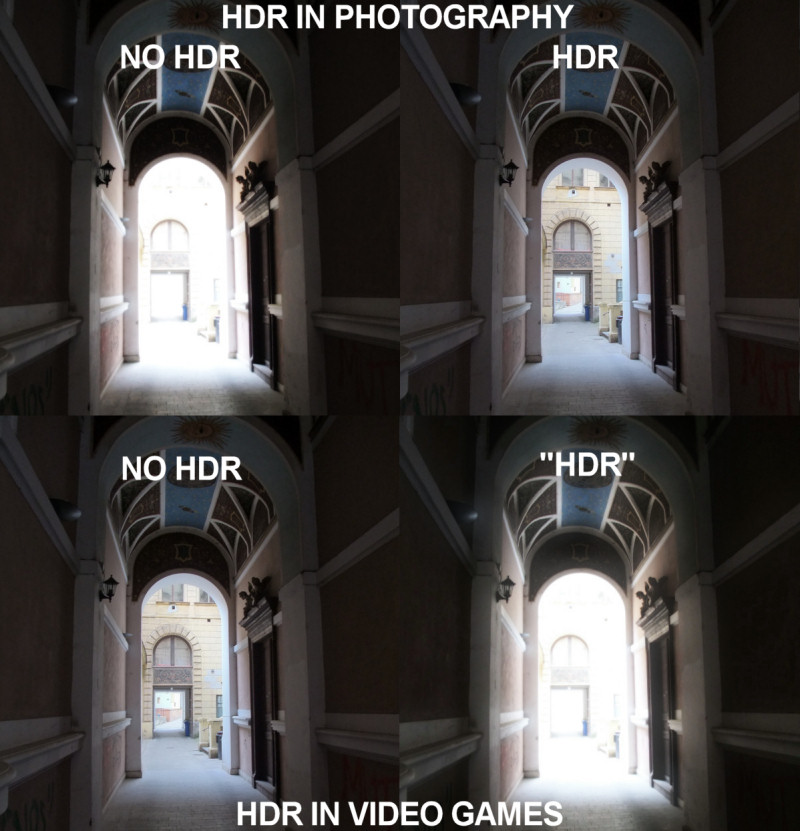From here, no idea who made it; I’d like to shake his hand. Found here, but the poster found it via StumbleUpon.

Having seen way too much bloom on the Atacama Desert map for the Russian pilots in Battlefield: Bad Company 2 (my current addiction, e.g. this and this), I can relate.
Edit: please do read the comments for why both pairs of images are wrong. I’m so used to HDR == tone mapping that I pretty much forgot the top pair is also technically incorrect (HDR is the range of the data, tone mapping can take such data and map it nicely to a displayable 8-bit image without banding) – thank you, Jaakko.